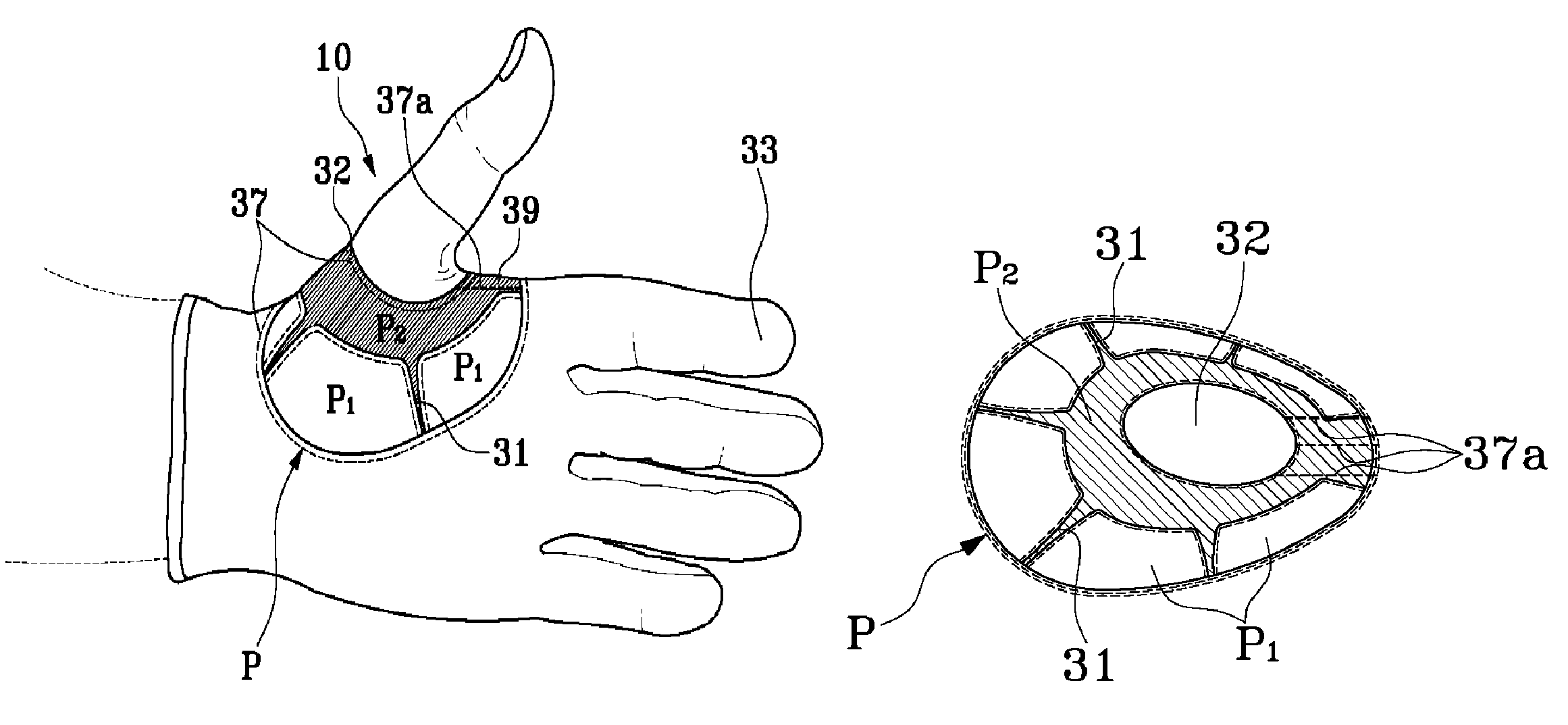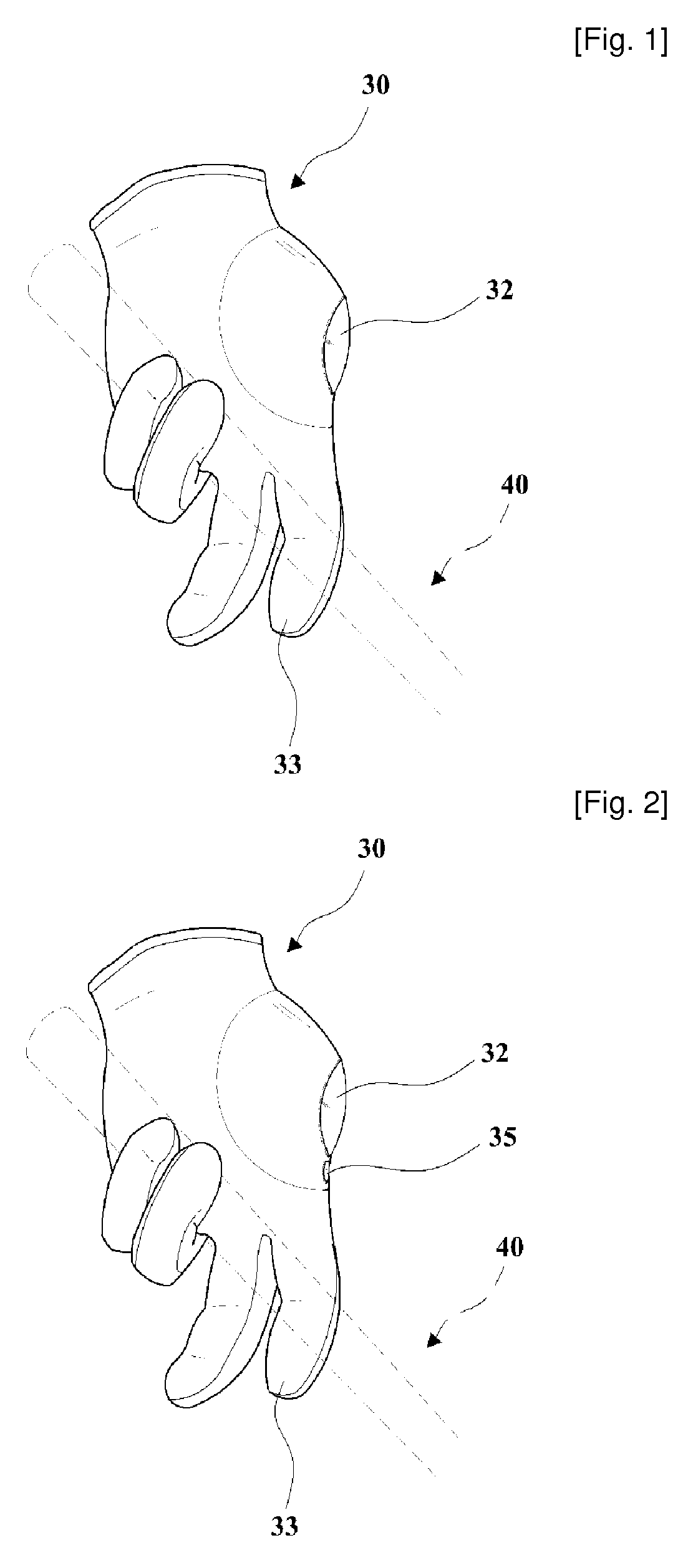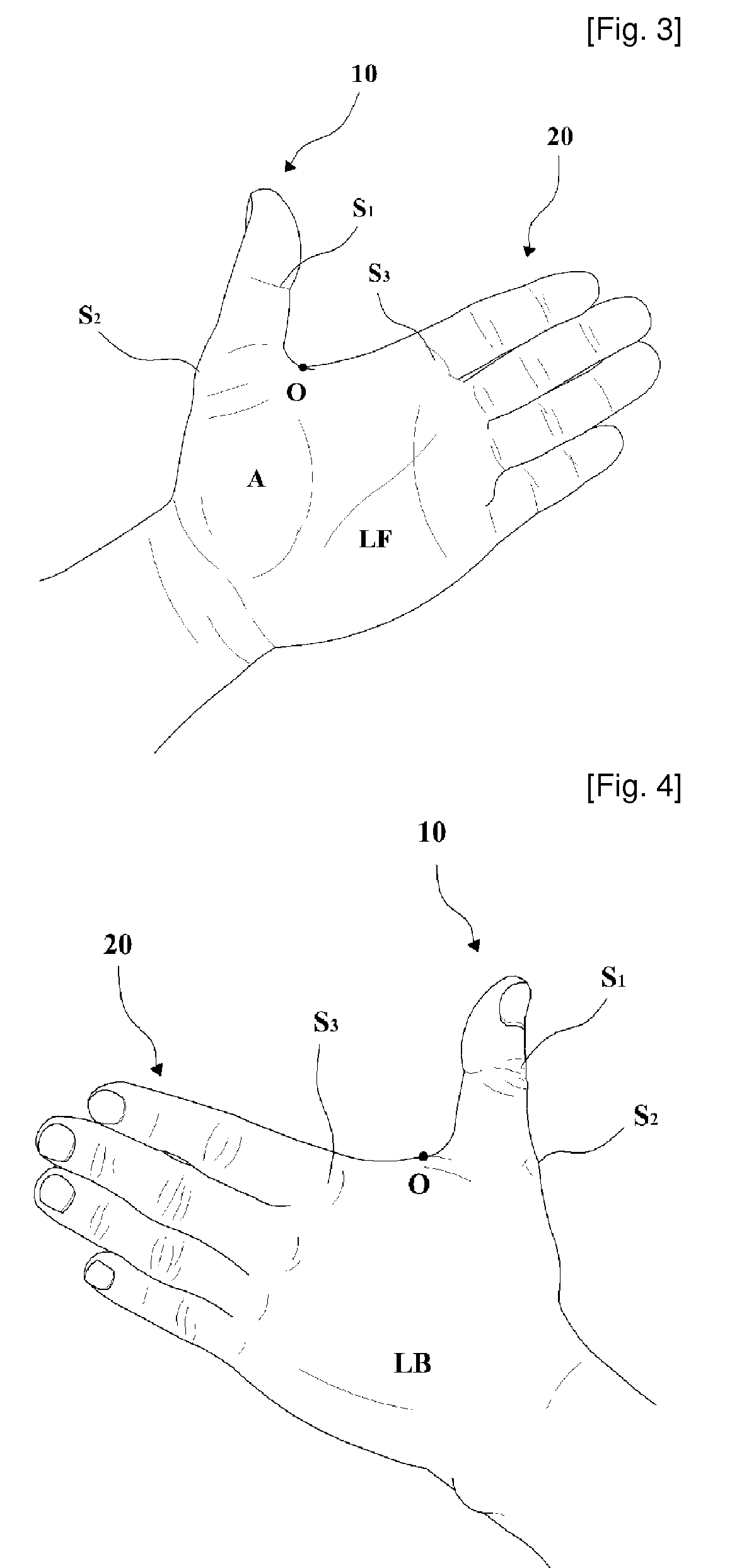Golf glove for right grip and suitable swing
a glove and glove technology, applied in the field of glove, can solve the problems of inability to support the weight of the club at the top of the backswing, the grip cannot support the weight of the club, and the incorrect ball direction, so as to prevent stretching or expansion of the covering around the thumb opening, not create a sense of heterogeneity, and prevent stretching
- Summary
- Abstract
- Description
- Claims
- Application Information
AI Technical Summary
Benefits of technology
Problems solved by technology
Method used
Image
Examples
Embodiment Construction
[0134]The configuration of the invention and the diagrams can be described in detail as follows.
[0135]The golf glove for proper grip and suitable swing of this invention is configured with an opening (32) such that there is no covering over the thumb area (see FIGS. 1 and 2). In particular, because this is for a proper grip and suitable swing, the location of the thumb area is of the greatest importance.
[0136]Only when the bottom of the base of the forefinger (20) and the second joint of the thumb (10) are held together are a proper grip and suitable swing possible; therefore, the location where the thumb (10) area is absent is the area where the primary skin contact between the bottom of the base of the forefinger (20) and the thumb (10) will take place.
[0137]If the location where the thumb area is removed is as aforedescribed, the area where the basal face of the thumb contacts the handle of the club (40) also increases (see FIG. 8), not only increasing the sensation of the skin b...
PUM
 Login to View More
Login to View More Abstract
Description
Claims
Application Information
 Login to View More
Login to View More - R&D
- Intellectual Property
- Life Sciences
- Materials
- Tech Scout
- Unparalleled Data Quality
- Higher Quality Content
- 60% Fewer Hallucinations
Browse by: Latest US Patents, China's latest patents, Technical Efficacy Thesaurus, Application Domain, Technology Topic, Popular Technical Reports.
© 2025 PatSnap. All rights reserved.Legal|Privacy policy|Modern Slavery Act Transparency Statement|Sitemap|About US| Contact US: help@patsnap.com



